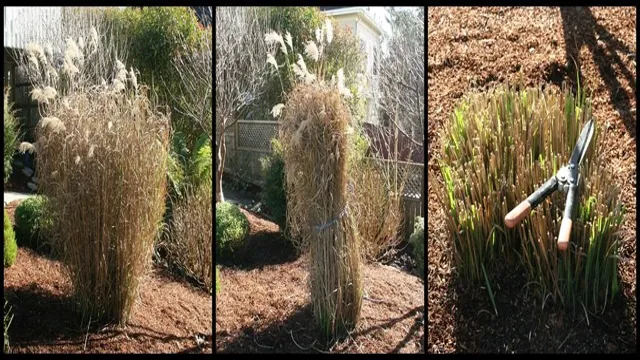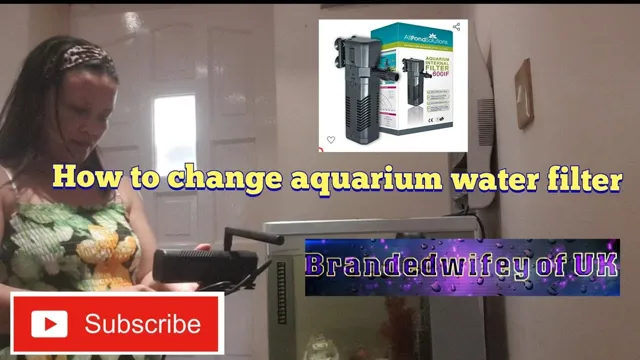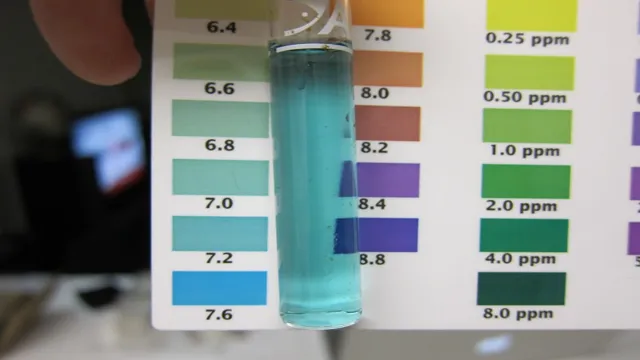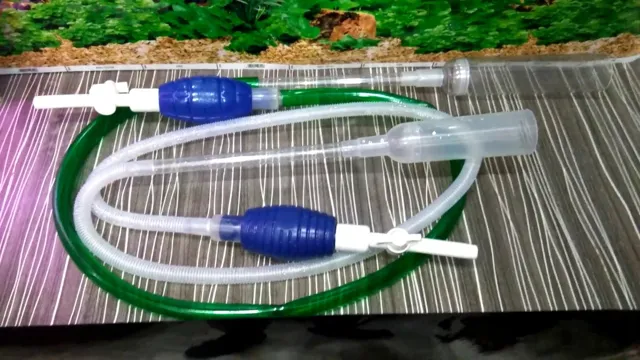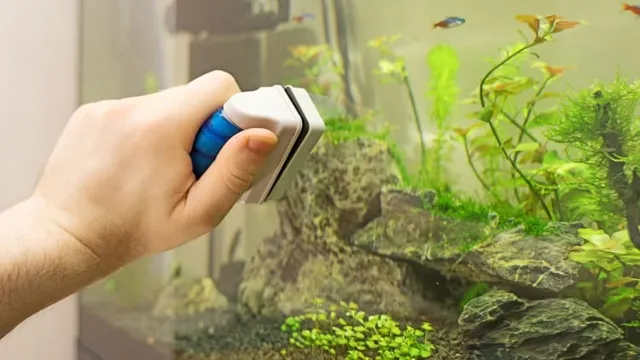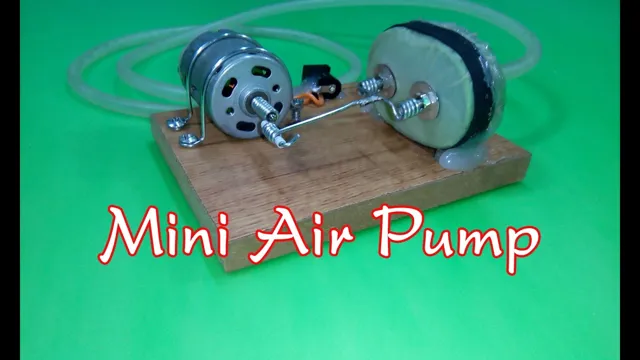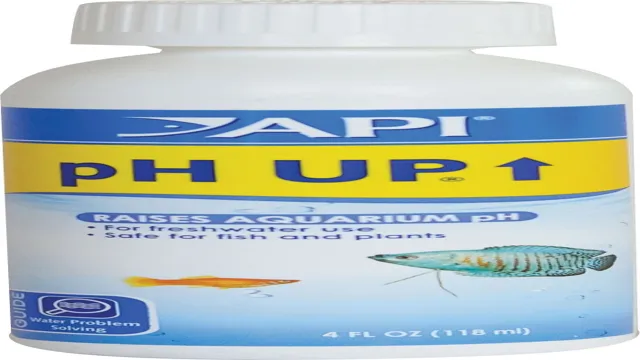Keeping your aquarium grass healthy and vibrant requires a bit of effort and attention to detail. With the right care, however, the rewards of a flourishing aquascape are well worth it! One crucial aspect of aquarium grass maintenance is pruning, but where do you begin? In this how-to guide, we will explore the reasons for pruning, the steps involved, and some helpful tips to ensure the best results. Just like regular haircuts promote hair growth and prevent split ends, pruning your aquarium grass helps to maintain a neat appearance, promote new growth, and prevent overcrowding.
So let’s get started and learn how to give your aquascape a much-needed trim!
Tools You Need
If you are a fan of aquariums and aquatic plants, you know how important pruning is for maintaining healthy plants. Aquarium grass is a popular choice for aquariums, but it can quickly grow out of control without proper maintenance. To prune aquarium grass, there are a few key tools that you will need.
To start, a pair of good quality, sharp scissors is essential. These will allow you to make precise cuts without damaging the plant. Additionally, you may consider investing in a pair of aquascaping tweezers to help reach difficult areas or to remove any dead leaves.
To ensure that you are keeping track of your progress, a small notebook or plant app can be helpful for recording the dates and details of your pruning sessions. By having these tools on hand, you can keep your aquarium grass looking tidy and healthy.
Scissors or aquascaping shears
When it comes to maintaining a beautiful aquascape, one of the most essential tools you’ll need is either scissors or aquascaping shears. These tools are essential for trimming and pruning your plants, allowing you to maintain their shape and discourage overgrowth. While both scissors and aquascaping shears serve the same function, there are a few key differences between the two.
Scissors are typically smaller and have longer blades that can be used to trim individual stems or leaves. They’re ideal for reaching into tight spaces or making precise cuts. Aquascaping shears, on the other hand, are larger and have shorter blades that are better suited for cutting through thicker stems or larger bunches of plants.
They also typically have a longer handle that allows you to apply more force and get a cleaner cut. Ultimately, whether you choose scissors or aquascaping shears will depend on your specific needs and the size of your aquascape. If you have a smaller setup with delicate plants, scissors will be the better choice.
If you have larger plants or a more intricate setup, aquascaping shears may be the way to go. Whichever tool you choose, be sure to keep them clean and sharp. Dull blades can damage your plants and make it harder to get a clean cut.
By investing in a quality pair of scissors or aquascaping shears and taking good care of them, you’ll be able to maintain a beautiful and healthy aquascape for years to come.

Tweezers
When it comes to personal grooming, tweezers are an indispensable tool that every person should own. Not all tweezers are created equal, though. For plucking hairs with precision and ease, it’s essential to choose the right one.
In fact, there are different types of tweezers, specially designed for specific purposes. The most common one is the slant-tip tweezer, which is perfect for shaping eyebrows and removing facial hairs. For ingrown hairs and splinters, flat-tip tweezers are ideal.
Pointed-tip tweezers, on the other hand, are best for removing splinters or fine hairs that are hard to see. Whatever kind of tweezer you choose, always make sure that its tips meet precisely to make hair removal smoother and more efficient. In addition, opt for a high-quality tweezer that is made of stainless steel and has a good grip.
With the right tweezers on hand, you’ll be able to keep ear, nose, and eyebrow hairs in check and look your best.
Bucket or container for trimming waste
When it comes to trimming your plants, having a bucket or container specifically for waste can make the process so much easier. Not only does it help keep your workspace clean, but it also ensures that you’re catching all of the trimmings and not leaving any behind to potentially cause problems later on. This tool is a must-have for any grower, whether you’re just starting out or have been doing it for years.
It’s important to choose a container that’s big enough to hold all of your waste, but not so big that it becomes difficult to move or manage. By using a designated bucket or container for your trimming waste, you’ll save time and keep your garden looking tidy. So why not make this small investment and see how much easier your trimming process can become? (See Also: How to Make Artificial Driftwood for Aquarium: A Step-by-Step Guide)
Preparing to Prune
Pruning aquarium grass is an important task that every aquarium owner should be familiar with. Before you begin, you need to prepare yourself and your tools. First, make sure you have a pair of sharp scissors or pruning shears.
Dull tools can damage the grass and make it harder for it to grow back. Next, take a close look at your aquarium and observe where the grass is growing the most. Pay attention to the areas that seem to be overgrown or where the grass is growing too tall.
This is where you will focus your pruning efforts. Finally, make sure your hands are clean and dry before touching the grass. This will prevent any unwanted bacteria or contaminants from entering your aquarium.
With these steps complete, you’ll be ready to start pruning your aquarium grass and promoting healthy growth for your aquatic friends.
Take a good look at your aquarium grass
When it comes to aquariums, one of the most visually striking elements is the aquarium grass. Whether you have a freshwater or saltwater aquarium, the vibrant green color and delicate leaves of the grass bring life to your underwater oasis. However, it’s important to keep in mind that aquarium grass requires proper maintenance in order to thrive.
One crucial aspect of this maintenance is pruning. Before you start snipping away at your aquarium grass, there are a few key things to consider. First, make sure you have the right tools for the job – sharp scissors or pruning shears will make your task much easier.
Secondly, ensure that you’re only pruning the parts of the grass that need trimming. Don’t be too quick to remove all the leaves or stems on a plant, as they all play a role in the overall health and appearance of the grass. Taking the time to prepare before you prune will help to ensure that your aquarium grass stays healthy and beautiful for years to come.
Identify old and dead parts of the plant
When it comes to preparing to prune your plants, it’s important to identify which parts are old and dead. These parts not only detract from the overall appearance of the plant, but they also take up valuable resources that could be better used elsewhere. To identify these parts, take a close look at the plant and see if there are any branches or leaves that are discolored or wilted.
These are clear indicators that the part is no longer alive and should be removed. Additionally, pay attention to any branches or leaves that are blocking light from reaching other parts of the plant. By removing these parts, you’re helping to ensure that the entire plant receives the necessary nutrients and sunlight to thrive.
So, before you begin pruning, take the time to carefully identify which parts should go and which ones should stay, and your plant will thank you for it.
Clear your aquarium of debris
If you have an aquarium at home, it’s essential to keep it clean and well-maintained to ensure the health and longevity of your fish. One critical step in aquarium maintenance is clearing out any debris that may accumulate, such as uneaten food, dead plant matter, or fish waste. Before you start pruning, make sure to turn off any equipment, such as filters or pumps, to avoid sucking up any fish or damaging the equipment.
You’ll also want to prepare a bucket or container to catch the debris you’ll be removing. Once you’re ready to start, use a net or your hands to carefully remove any large debris floating or sitting on the bottom of the tank. Be sure to check any decorations or plants as well, as they can often collect debris in hard-to-reach areas.
By regularly clearing out debris, you’ll help maintain good water quality and a healthy environment for your aquatic pets.
Trim and Prune
Pruning aquarium grass can seem like a daunting task, but it’s actually quite simple once you know what to do. The first step is to trim the top of the grass to the desired length. Use a sharp pair of scissors and make sure to cut at a slight angle to create a natural look.
Next, remove any dead or yellowed leaves by gently pulling them off with your fingers. This will help the plant focus its energy on growing new, healthy leaves. Finally, thin out the grass by snipping off any excess plant material at the base of the stem.
This will prevent overcrowding and ensure that the plant has enough room to grow. Remember to take your time and be gentle when pruning, as aquarium grass can be delicate. With a little bit of practice, you’ll soon be a pro at keeping your aquatic plants looking great! (See Also: How to Dismantle Aquarium: A Step-by-Step Guide to Disassembling Your Fish Tank)
Use your scissors or aquascaping shears to trim dead and old parts
One of the most important tasks of maintaining a healthy and thriving aquarium is to regularly trim and prune any dead or old parts of plants. This can be done using scissors or aquascaping shears. Trimming helps to promote healthy plant growth by removing any decaying or unhealthy parts before they can harm the rest of the plant.
Additionally, it can also help to control the size and shape of the plant to fit within the confines of the aquarium. Pruning is also necessary to prevent overcrowding of plants, which can lead to competition for nutrients and light. By removing excess plants, you can maintain a balanced ecosystem within the aquarium.
It’s crucial to keep in mind that overzealous trimming or pruning can be harmful to plants, so it’s essential to strike a balance between healthy plant growth and maintaining a visually appealing aquascape. Overall, regular trimming and pruning are essential components of aquarium maintenance and can ensure the long-term health and success of your aquatic plants.
Use tweezers to remove any other debris and dead leaves
When it comes to taking care of your plants, trimming and pruning are essential to ensure their healthy growth. After all, trimming and pruning help your plants to grow in the right direction and promote bloom production. To get started, use a pair of sharp, clean pruning shears to remove any branches or leaves that are dead or diseased.
Be sure to sterilize your pruning shears with rubbing alcohol or bleach before and after every use to prevent the spread of disease. To remove any other debris or dead leaves, use a pair of tweezers, taking care not to damage the surrounding foliage. By regularly trimming and pruning your plants, you can help them to thrive and stay healthy for years to come.
So why not give it a try? Your plants will thank you!
Place trimmed parts in a bucket or container for disposal
When it comes to maintaining a beautiful yard or garden, regular trimming and pruning are essential. Not only does it help promote healthy growth of plants and trees, but it also keeps them looking neat and tidy. However, once you trim or prune, you’re left with a pile of excess branches, twigs, and leaves that need to be disposed of.
To make the task easier, it’s best to have a bucket or container on hand to collect the trimmed parts. This makes it easier to transport and dispose of them properly. It’s important to note that you should never leave trimmed parts lying around, as they can become a tripping hazard and also attract pests.
By collecting them in a container, you’ll keep your yard clean and safe while also doing your part for the environment. Additionally, you can even consider turning the trimmed parts into mulch or compost to help nourish your plants and reduce waste. So, next time you trim or prune, be sure to have a bucket or container on hand for easy and efficient disposal.
Clean Up
Aquarium grass like Java moss, Hornwort, and Anubias are great additions to any aquarium. However, after a while, these plants can become unkempt, making your aquarium look untidy. One simple way to keep your aquarium grass looking neat and tidy is through pruning.
Pruning is a simple process that involves cutting off the dead parts of the plant, promoting new growth, and keeping the plant from outgrowing your tank. To prune your aquarium grass, start by trimming the dead leaves, branches, or stems from the base of the plant. This process is necessary to maintain a clean and healthy plant.
You should also prune overgrown grass to prevent it from taking up too much space in your aquarium. With regular pruning, your aquarium grass will continue to flourish, giving your tank a vibrant and healthy appearance. Remember to be gentle when pruning, lest you damage the plant.
With time, you will master the art of pruning your aquarium grass without hurting the plant.
Remove all the trimming waste and debris from the aquarium
It’s important to regularly clean up your aquarium to ensure the health and well-being of your fish and other aquatic creatures. One crucial step in this process is removing all the trimming waste and debris from the tank. This debris can accumulate over time as a result of plant growth, uneaten food, and other factors.
Leaving it in the aquarium can create a breeding ground for harmful bacteria and algae, and can negatively impact water quality. To clean up, start by using a net or siphon to remove any visible debris. Then, use a gravel vacuum to remove any waste that has settled on the bottom of the tank. (See Also: How to Increase Oxygen Content in Aquarium: Top 7 Effective Tips)
Be sure to also clean any equipment, such as filters or heaters, to prevent buildup. With proper cleanup, your aquarium will not only look better but will also be a healthier environment for your aquatic pets to thrive in.
Do a partial water change after pruning to reduce the risk of algae growth
When it comes to maintaining a thriving aquatic environment, pruning your plants is something that should be done regularly. However, did you know that doing a partial water change after pruning can significantly reduce the risk of algae growth in your tank? Algae thrive on excess nutrients in the water, and when you prune your plants, you’re adding lots of those nutrients into the water column. Therefore, it’s a good idea to remove some water and replace it with fresh, clean water to dilute the excess nutrients and keep the water parameters stable.
Doing this will help discourage algae growth and keep your tank looking clean and healthy. So, next time you prune your plants, be sure to do a partial water change as a follow-up. It’s a simple step that can make a big difference in the long run!
Conclusion
In conclusion, pruning aquarium grass may seem daunting at first, but with a little know-how and patience, it can be quite satisfying and even therapeutic. As with any task, it’s important to have the right tools and approach the job with care. Remember to only trim a third of the grass at a time, and never cut it too short.
With a little attention and the occasional haircut, your aquarium grass will flourish and bring life to your underwater oasis. So grab those scissors and get to trimming, your aquatic friends will thank you for it!”
FAQs
Why is it important to prune aquarium grass?
Pruning aquarium grass is important to promote healthy growth, prevent algae buildup, and maintain the overall aesthetic of the tank.
How often should aquarium grass be pruned?
The frequency of pruning depends on the type of grass and the growth rate. However, it is generally recommended to trim the grass once every two weeks or when it grows too long.
What tools do I need to prune aquarium grass?
You can use scissors, pruning shears, or a specialized aquarium plant trimmer to prune aquarium grass.
Can I prune aquarium grass even if it’s not too long?
Yes, it’s better to remove any dead or damaged leaves and stems to help the plant grow healthier.
Can I prune aquarium grass while the fish are still in the tank?
Yes, but be careful not to scare or harm the fish while pruning. Slowly move your hand towards the grass, and use delicate movements to avoid causing any disturbances.
Can I prune aquarium grass while the filter is running?
Yes, it’s safe to prune aquarium grass while the filter is running.
How do I dispose of the trimmed grass?
You can either throw the trimmed grass in the trash or compost it if you have a compost bin. Do not throw it in the tank, as it can cause water quality issues.

